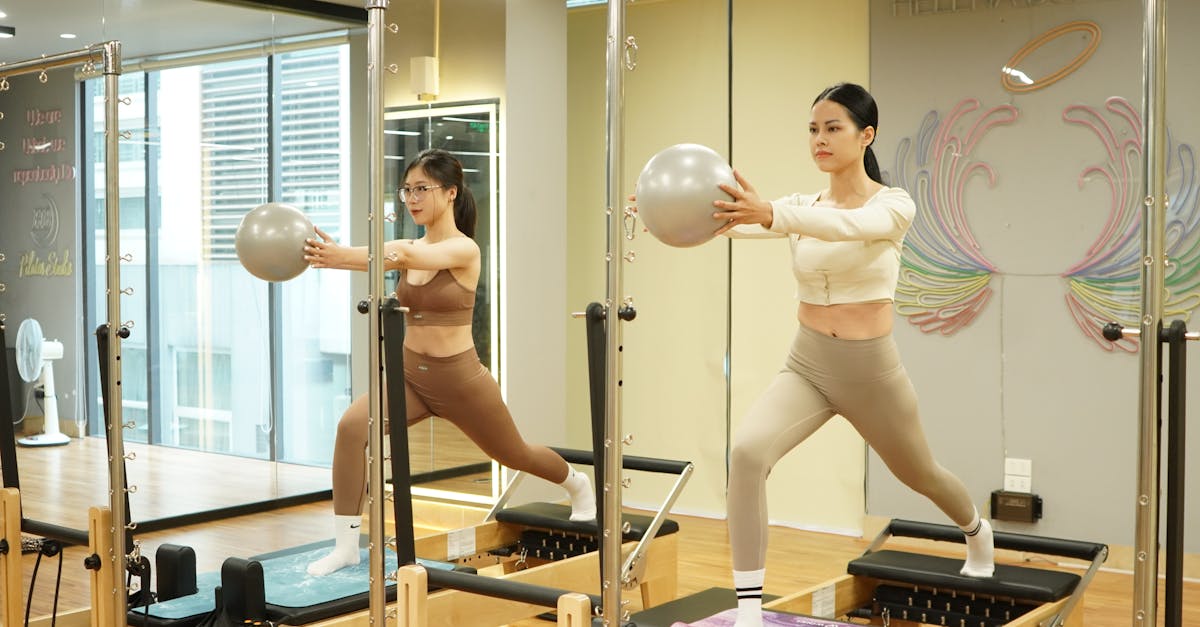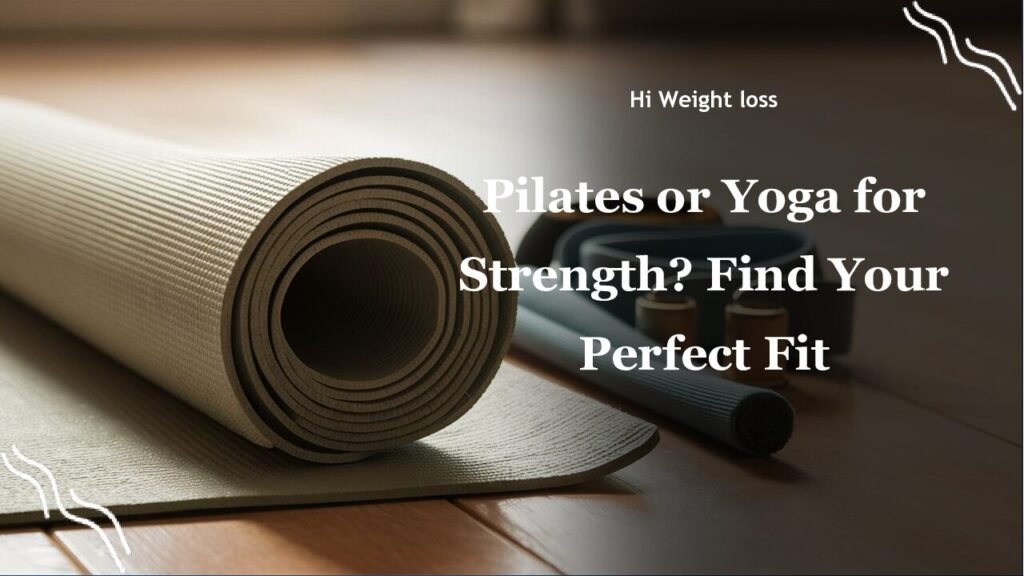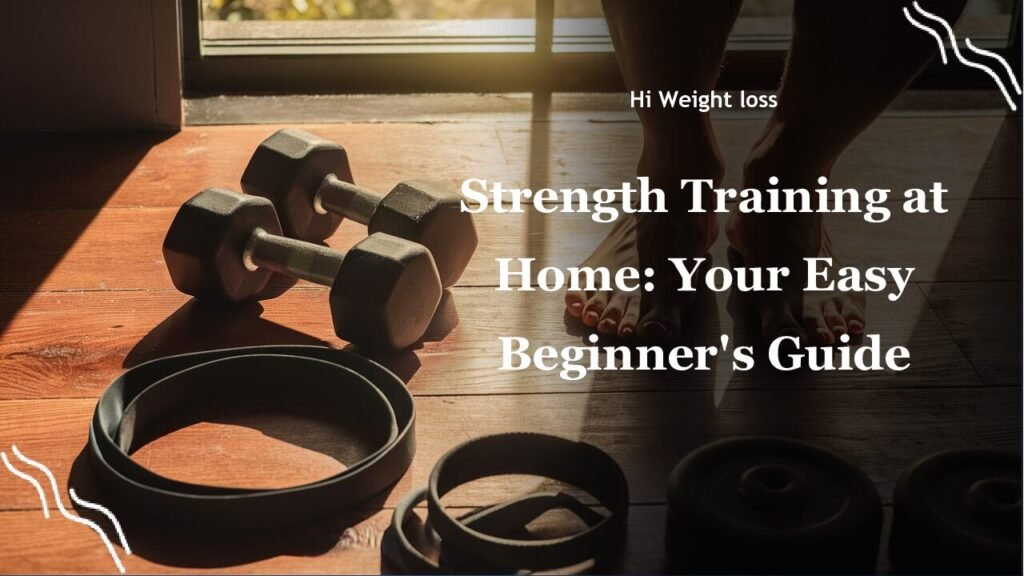Are you struggling to decide whether Pilates or yoga is the better choice for building strength? It’s a common dilemma – both offer fantastic fitness benefits, but figuring out which one aligns best with your goals can be confusing. Let’s explore both options, drawing from experiences and expert insights, to help you make the right decision. We’ll look at how each discipline approaches strength training and what benefits they offer, so you can confidently choose the best path for your fitness journey.
Pilates vs Yoga: Which is Better for Strength Training?
Understanding Pilates for Strength
Pilates is a method that emphasizes core strength, muscle control, and body alignment. It’s a fantastic choice for those wanting to tone and build strength with a focus on precision. It uses body weight and sometimes equipment like resistance bands or reformer machines to help you challenge your muscles. Think of it as a very controlled way to strengthen your body.
I remember when I first started Pilates, I was surprised at how much I could feel even the smallest movements. It’s not about lifting heavy weights; it’s about engaging the muscles correctly. I found that my posture and core strength improved significantly, which made everyday activities feel easier.
According to Peloton’s blog, Pilates is indeed a form of strength training. It’s focused on maintaining muscle strength and toning rather than necessarily increasing muscle mass. For instance, a study highlighted by Peloton, found that Pilates can improve muscular endurance, flexibility, and balance, particularly abdominal strength and hamstring flexibility.
Pilates can be especially effective for those who want to improve their core strength. Through controlled movements and mindful engagement of your core muscles, you can significantly enhance your stability and overall strength.

Exploring Yoga for Strength Training
Yoga, on the other hand, takes a more holistic approach to fitness. It focuses not only on physical strength, but also on flexibility and mental well-being. You’re engaging your muscles by holding poses, which builds muscle endurance. It’s less about the intensity and more about the consistent practice of holding your own body weight.
A friend of mine, Sarah, started yoga to reduce stress. She found that as her practice deepened, she also gained unexpected muscle tone and strength. She mentioned that holding poses like plank and warrior really challenged her, and she became aware of muscles she didn’t even know she had.
The Cleveland Clinic confirms that yoga is also a great contributor to strength training. According to them, yoga improves muscle endurance through repetitive movements and holding poses. Also, the Garuda highlights that yoga is effective for strengthening various muscle groups through these extended holds, which also boosts overall flexibility and balance.
Yoga is a great approach if you’re looking for a full-body workout that also calms your mind. It’s more about building slow, consistent strength rather than focusing on large muscle gains.
Pilates vs Yoga: A Direct Comparison
Now, let’s look at a direct comparison between these two methods. Do you want to know which one is better for muscle endurance? Let’s break it down further.
Pilates focuses more on core strength and controlled movements. It’s also more likely to use equipment to challenge your muscles. It might be the better option if you’re trying to improve specific muscle areas or address imbalances. For example, the Cleveland Clinic points out that while both are great options, Pilates is specifically great for core strength.
Yoga, by contrast, offers more of a full-body workout that emphasizes flexibility and muscle endurance. It also integrates mental well-being, making it a great choice for those seeking both physical and mental benefits. The Garuda emphasizes that yoga contributes to strength and flexibility through repetitive movements and holding poses, which also help the muscles and joints.
Key Differences Between Pilates and Yoga
To help you decide, here’s a simple table highlighting the key differences between Pilates and yoga when it comes to strength training:
| Aspect | Pilates | Yoga |
|---|---|---|
| Focus | Core strength, muscle control, alignment | Full-body strength, flexibility, mental well-being |
| Method | Controlled movements, body weight, sometimes equipment | Holding poses, repetitive movements |
| Strength Type | Toning and maintaining muscle strength | Muscle endurance, overall strength |
| Additional Benefits | Improved posture, balance | Increased flexibility, stress reduction |
Which One is Right for You?
The best option really depends on your individual goals and preferences. Are you primarily concerned with core strength? Then Pilates might be the more direct choice for you. If you want a full-body approach with the benefit of mental well-being, you might prefer yoga.
From my own experience, I’ve found that Pilates really helped me dial into the smaller, often neglected muscles, especially in my core. On the other hand, my friend Sarah feels yoga is more relaxing but has made her stronger overall and more flexible. You can also try out both and see which one fits into your routine better.
Conclusion
Choosing between Pilates and yoga for strength training doesn’t have to be a daunting task. Both offer effective paths to building strength, but they approach it in different ways. Pilates focuses on core strength, precise control, and alignment, often using equipment to add resistance. On the other hand, yoga emphasizes a holistic approach, integrating strength with flexibility and mental well-being through repetitive movements and holding poses.
The key is understanding what each practice brings to the table and then aligning that with your personal goals and needs. My experience, combined with the knowledge from the authoritative sources I’ve shared, shows that both Pilates and yoga can help you on your strength training journey. Why not give both a try and see which one works best for you? It’s all about finding the right fit for your fitness needs. Share this article if you found it helpful and let’s build strength together!
FAQ
Is Pilates good for building muscle mass?
Pilates is great for toning and maintaining muscle strength. However, it may not be sufficient on its own for significant muscle gains without adding weights or additional resistance.
Can yoga help improve core strength?
Yes, yoga can contribute to core strength, though it focuses more on full-body alignment and overall strength and flexibility. Some yoga poses, such as plank and boat pose, strongly engage the core muscles.
Which is better for muscle endurance, Pilates or yoga?
Both Pilates and yoga help build muscle endurance. Yoga does so by holding poses, while Pilates focuses on controlled movements and precise muscle engagement.
Can I do Pilates and yoga on the same day?
Yes, you can do Pilates and yoga on the same day, but listen to your body. Ensure you are not overtraining and are giving your muscles enough time to recover between sessions.
Is Pilates or yoga better for beginners?
Both Pilates and yoga can be suitable for beginners. The best option depends on your personal preferences and fitness goals. If you prefer precision and core work, start with Pilates; if you like more of a holistic approach, start with yoga.



